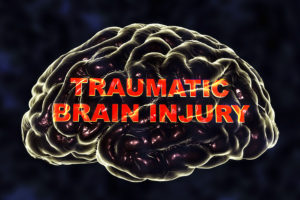 As humans, we rely on our vision to make decisions. We scan our surroundings, analyze what’s around us, and act accordingly. For drivers of large trucks, the same logic applies. Truck drivers constantly have to be aware of their surroundings and any dangers that exist around them.
As humans, we rely on our vision to make decisions. We scan our surroundings, analyze what’s around us, and act accordingly. For drivers of large trucks, the same logic applies. Truck drivers constantly have to be aware of their surroundings and any dangers that exist around them.
Now, imagine having limited vision. No matter how hard you try you can’t see 10 feet in front of you, and the area directly on either side of you is a blindspot. And the area directly behind you—well it’s not like you have eyes in the back of your head.
This is what it’s like to drive a truck. No matter how much a driver scans their surroundings or uses their mirrors, there will still be areas of the road they cannot see. For large trucks, several areas are simply outside of the driver’s line of vision. Because of this, vehicles traveling in a driver’s blind spot are at a high risk of being in a truck accident.
A Closer Look at the No Zones of Large Trucks
All vehicles have blind spots. From compact cars to 18 wheelers, there are just some areas that you cannot see. When you drive down the highway, you are likely aware of your own car’s blindspots. You use your mirrors, do an extra scan, and allow for an extra cushion when changing lanes. But for some reason, it’s easy to forget that large trucks have blind spots too, and these areas extend much further than your blind spots. As drivers, knowing where these areas are and staying clear can prevent an accident. Here are the main areas the Federal Motor Carrier Administration refers to as No Zones.
- The front of the truck: It’s easy to assume that a truck driver has greater visibility perched up high above the rest of the traffic. But the design of the truck makes it difficult for drivers to see directly in front of them. Think about your own car. If an object is shorter than the front of your car, how far out does it need to be for you to see them? Could you see a cat or a small dog if they were directly in front of your car? What about 3 feet in front of your car? Because a truck’s cab is so high, a driver can not see cars that directly in front of them. This blind spot extends from the end of the cab to about 20 feet in front of the truck.
- The back of the truck: It should come as no surprise that large trucks have very large rear blind spots. The larger trailer makes it impossible to see vehicles directly behind the truck, even with the assistance of mirrors. The rear blind spot on most large trucks stretches from the back of the truck to about 30 feet behind the truck.
- The sides of the truck: There are two different blind spots on the sides of large trucks—one on the driver’s side of the truck and one on the passenger side. On the driver’s side, the blind spot extends one lane over, from just behind the driver’s window to about the middle of the truck’s trailer. On the passenger side, the blind spot is larger. The blind spot spans the entire distance of the cab to the rear of the truck. The two lanes directly to the right of the are part of the driver’s blind spot.
Staying Safe on the Road
Pennsylvania drivers need to take greater precautions when it comes to driving next to a large truck as opposed to a passenger vehicle. You must always be aware of where you are in relation to the truck. The FMSCA suggests one simple rule to keep in mind when driving next to large trucks: if you can’t see the driver in the truck’s mirrors, it’s always safe to assume that they can’t see you. Here are a few other things you should keep in mind when you are on the road:
- Never ride a truck’s blind spots: It may be necessary to pass through a blind spot to get by a truck or to pass, but it is never a good idea to “ride” the blind spot. This means that you should get in and out of the no-zone as quickly as is reasonably possible. When you continue to stay in this zone, the driver doesn’t know you are here. This may cause them to change lanes and take over the lane you are in.
- Allow extra room when passing: The front blind spot extends 20 feet in front of the truck. That’s about the length of one and a half mid-sized cars. Never attempt to cut in front of a large truck. The truck won’t be able to see you and may drive right into you. This is especially dangerous in slow or stopped traffic. Remember, it takes almost twice as long for a truck to stop than it does a passenger vehicle.
- Don’t tailgate: Underride accidents are some of the most dangerous types of accidents. These accidents happen when a vehicle rides under the trailer of the truck. The vehicle becomes pinned and dragged with the truck. The impact of the collision can crush the front of the car and cause serious injury or death.
- Be alert: There are many reasons why a driver may not see you even if you are not driving in their blind spots. Because of this you always need to pay attention when driving around a large truck. Watch for any signs that the truck may be moving into your lane. If it looks like the truck might be coming into your lane, honk your horn to alert them of your presence.
- Buckle up: Truck accidents are dangerous, but you increase the risk of death exponentially if you do not wear your seatbelt. The National Highway Traffic Administration estimates that nearly 15,000 lives were saved in 2017 because the passengers were wearing their seatbelts.
Common Injuries After a Truck Accident

Accidents involving large trucks can cause serious injuries. Even low-speed accidents can cause a great deal of harm. The sheer size of these vehicles increases the likelihood of permanent injury or death. Some of the most common injuries after a truck accident include:
- Traumatic brain injuries: Traumatic brain injuries or TBIs are the result of a strong blow or penetrating wound to the head. TBI is an umbrella term that covers minor injuries including concussions, to more serious, life-threatening injuries. Common symptoms of a TBI include dizziness, loss of consciousness, fatigue, headaches, or mood changes.
- Spinal cord injuries: The spinal cord transmits messages from the brain to the rest of your body. When a spinal cord injury happens, it can cause serious issues. Often, a person with a spinal cord injury will suffer from permanent paralysis.
- Broken bones: Broken bones happen when too much force is put on the bones or joints. These breaks can be painful and may never fully heal. This can cause chronic pain or loss of mobility.
- Back and neck injuries: Whiplash is a common injury after rear-end accidents. The injury occurs when the head whips back and then forwards suddenly. This causes the neck to strain, resulting in pain. The pain may exist in the neck and back, but it may radiate to the arms and legs as well.
Understanding the Role Comparative Negligence Plays in Blindspot Accidents
Pennsylvania operates under modified comparative negligence. What this means is that an injured party can file a claim for damages even if the parties share blame.
After a blind spot accident, the insurance company may try to claim that you caused the accident because you were in the truck’s blind spot. However, this does not mean that you hold all the blame or even the majority of the blame. An experienced personal injury attorney can help you fight the insurance company and stand up for your rights.
How a Personal Injury Attorney Can Help
Any accident involving damages is complicated. A large truck accident has many factors that make the case even more complex. In a large share of these accidents, the victim sustains serious or life-threatening injuries. An experienced legal professional can help you navigate through the process and fight for a fair and just settlement. Some of the things you can expect your lawyer to do include:
- Gather and organize evidence: Evidence is one of the most important components in proving your case. Your attorney can collect photographs, request maintenance records from the trucking company, and collect any other physical evidence.
- Coordinate with medical professionals: After an accident, you may require ongoing care. This care can be expensive and difficult to manage. An experienced personal injury attorney can help you connect with healthcare professionals and is often able to postpone any payments until you settle your case.
- Interview and depose witnesses: Witnesses can also provide valuable information. If there were witnesses at the scene of the accident, your attorney will likely want to contact them. Your attorney will also talk to and may depose any medical care providers, the driver, and representatives from the trucking company.
- Negotiate with the insurance company: Almost all personal injury cases settle out of court. The insurance company will make what they think is a fair offer and you will be given the chance to respond and counter-offer. An experienced personal injury attorney can give you a greater understanding as to what is a fair offer for your injuries and advise you on whether you should or should not accept the insurance company’s offer.
- Schedule and attend mediation: Mediation is often necessary when two parties cannot agree. By attending mediation, you show that you are reasonable and willing to come to the table. Neither party can use anything said at mediation as evidence in the event of a trial. That said, the insurance company may use mediation as a way to intimidate you into thinking that they have a solid case. Having an attorney by your side can help you make smart decisions.
- File a lawsuit and represent you in court: While the goal is to settle the case out of court, some cases do make it in front of a jury. When this happens, it is important to present the evidence in an organized and professional matter.
- Pay any remaining bills and issue a final check: After you have reached an agreement with the insurance company or a judgment has been entered, your attorney will use the money to pay off any outstanding medical bills. In most cases, your attorney will be able to get the providers to reduce or forgive some of the debt. Your attorney will also pay any outstanding costs and lawyer fees before they issue a final check.
Choose a Philadelphia Truck Accident Attorney to Stay by Your Side
There are many complexities to truck accidents. These accidents often involve the driver, the trucking company, and other third-party defendants. These parties may use aggressive tactics to get you to settle for less than what you deserve. After a truck accident, you deserve fair compensation for your injuries. Because of their complexity of these types of accidents, choose an attorney with extensive experience working with large truck claims to help you.